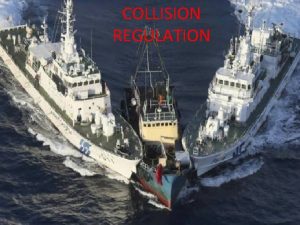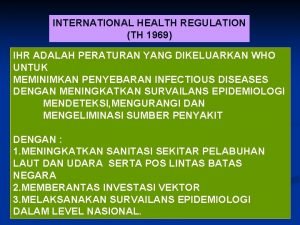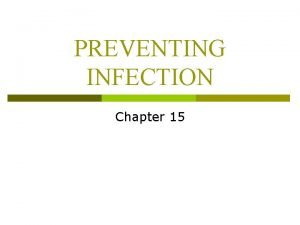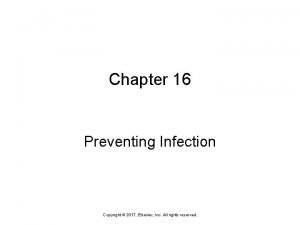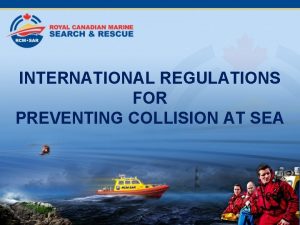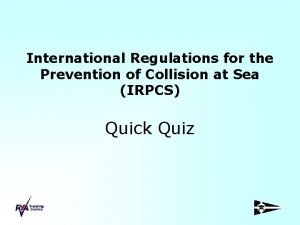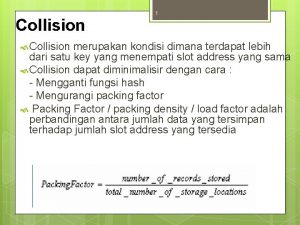COLLISION REGULATION PREFACE The International Regulations for Preventing












- Slides: 12

COLLISION REGULATION



PREFACE • The International Regulations for Preventing Collisions at Sea 1972(Colregs) are published by the International Maritime Organization (IMO)

• The COLREGs are derived from a multilateral treaty called the “Convention on the International Regulations for Preventing Collisions at Sea. ”

HISTORY • Prior to the development of a single set of international rules and practices, there existed separate practices and various conventions and informal procedures in different parts of the world, as advanced by various maritime nations.

• As a result, there were inconsistencies and even contradictions that gave rise to unintended collisions.

• Vessels’ navigation lights for operating in darkness as well as navigation marks also were not standardized, giving rise to dangerous confusion and ambiguity between vessels at risk of colliding.

• The International Regulations for Preventing Collisions at Sea were adopted as a convention of the International Maritime Organization on 20 October 1972 and entered into force on 15 July 1977.

• They were designed to update and replace the Collision Regulations of 1960, particularly with regard to Traffic Separation Schemes (TSS) following the first of these, introduced in the Strait of Dover in 1967.

• As of June 2013, the convention has been ratified by 155 states representing 98. 7% of the tonnage of the world's merchant fleets. They have been amended several times since their first adoption.

Franko Čolak, 2. C
 Collision regulation
Collision regulation International health regulation adalah
International health regulation adalah International health regulation adalah
International health regulation adalah Advantages and disadvantages of johannes volkelt theory
Advantages and disadvantages of johannes volkelt theory Chapter 15 preventing infection
Chapter 15 preventing infection Chapter 16 preventing infection
Chapter 16 preventing infection Chapter 9 resolving conflicts and preventing violence
Chapter 9 resolving conflicts and preventing violence Chapter 24 lesson 2 preventing and treating stds
Chapter 24 lesson 2 preventing and treating stds Work comp puncture
Work comp puncture Preventing hand injuries
Preventing hand injuries Chapter 14 promotion of safety
Chapter 14 promotion of safety Chapter 13:2 preventing accidents and injuries
Chapter 13:2 preventing accidents and injuries Chapter 9 lesson 2 resolving conflicts
Chapter 9 lesson 2 resolving conflicts
